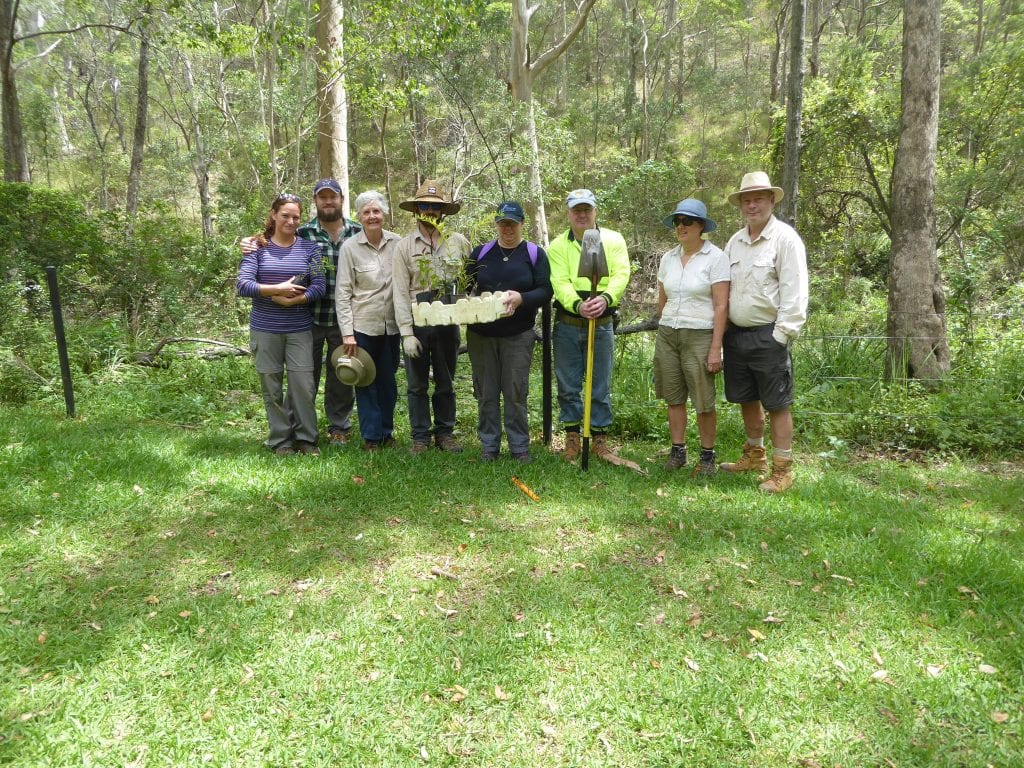National Parks, Nature Refuges, Private Reserves, State Forests, Uncategorized
The Value of Volunteer Conservation Groups
We are fortunate in Australia to have some of the oldest and largest subtropical rainforest left on the planet. This has been achieved by the foresight of some of our pioneers who recognised the value of these special places that were, in some cases, being exploited for their timber, minerals and agricultural resources. The reservation and preservation of these areas goes back to the formation of the National Parks Association of Queensland (NPAQ).
On Brisbane’s doorstep we are fortunate to have some iconic national parks in Lamington, Main Range, D’Aguilar, Fraser Island and Tamborine National Parks. While I have visited many national parks in Australia and overseas, I have a close affinity with Tamborine National Park.
This Park occupies part of the Tamborine Mountain Plateau which is part of the northern spur of the McPherson Range. Tamborine has rich volcanic soils and basalt rock outcrops which are a legacy of being on the outer rim of the Mount Warning shield volcano.
European settlement of the Tamborine Mountain Plateau started in 1875 when some of the plateau was cleared for dairying and fruit and vegetable farming. Fortunately some of these early pioneering families donated land to be included in the national park.
For me, Tamborine Mountain was a place to escape the city and take up bushwalking. Later it was a natural wonderland to take a young family to find strange insects and, if we were quiet, creep up on a land mullet or a sleepy carpet python.
Tamborine National Park has an area of 11.6 square kilometres and is made up of 14 parcels of land that are not contiguous. This is somewhat of a disadvantage as our native animals do not have the corridors to move from one parcel to another to feed and breed. In some cases the Scenic Rim Regional Council reserves and private land has stands of subtropical rainforest which adjoins the national parkland and provides these corridors.
In March 1988 a meeting was convened at the local information centre to gauge interest in starting a volunteer group to support the local national park rangers. The activities being proposed were eradicating weed species, track maintenance, plant propagation, revegetation of degraded areas and general maintenance such as painting. It was from this meeting that the Friends of Tamborine National Park (FoTNP) was formed.
My involvement started when my elder daughter showed an interest in becoming a park ranger. A parent’s involvement has led to a 32 year commitment to improving the national park and giving others the opportunity to get a hands-on experience in what could be their future career.
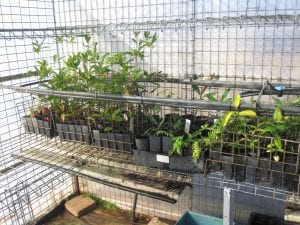
The FoTNP was one of the first national park volunteer groups to be formed in Queensland. There are over 60 other volunteer groups working in Queensland’s national parks and these can be found at https://apps.des.qld.gov.au/park-volunteers/
The FoTNP has 12 plots in the National Park where we work. After weed species have been removed, subtropical rainforest species from the group’s propagation nursery are planted.
An example one of the plots is in a 3.7 hectare parcel of land which was donated by Kath Dobbie and added to Tamborine National Park in 1978 and is known as Pirralilla Section. Part of the parcel had remnant rainforest and a plant survey found it to contain a high concentration of Marbled baloghia (Baloghia marmorata) which is vulnerable and confined to isolated areas from Lismore to Gympie and on Tamborine Mountain.
The Pirralilla Section was originally used as a flower farm and at the time it was gifted to the National Park, was partly covered in kikuyu grass and lantana along with all the usual abandoned farm equipment.
In 1995 some of the lantana was cleared by machine but most of the work has been done by hand by the FoTNP volunteers. A broad selection of subtropical rainforest plant species endemic to Tamborine Mountain were planted over a 12 year period.
This area is now completely covered in a well-established rainforest and is a wonderful example of what a committed volunteer group can achieve. Eastern whipbirds, green catbirds and the Australian brush turkey have given the regenerated plot their stamp of approval.
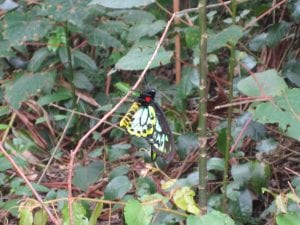
A project to attract the Richmond birdwing butterfly (Ornithoptera richmondia) to the Pirralilla Section commenced with the planting of Richmond birdwing vines (Pararistolochia praevenosa), the food source for the larvae of this butterfly species. Due to clearing of rainforest areas in south east Queensland and the migratory habits of this beautiful butterfly, the natural breeding cycle had been severely affected. Planting of the Richmond birdwing vines around the perimeter of the revegetated area was undertaken. After several years’ growth, the mature vines in Pirralilla Section now attract this butterfly and the breeding cycle begins.
Nature does require a helping hand, and although the rich volcanic soils promote the growth of the planted trees, the perching birds bring in seed from outside the park from weed species such as privet, wild tobacco, ochna, climbing asparagus, Chinese celtis – to name a few. Ongoing maintenance is required in the planted areas and in the mature rainforest to keep the weed species at bay.
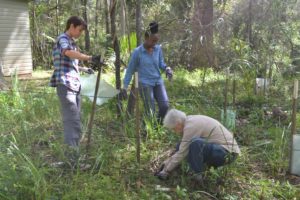
All this work requires volunteers, and a steady stream of new recruits join the FoTNP group for varying reasons. Some young people join because they are interested in or are studying for conservation, land management or horticulture certificates or degrees at local universities or undertaking study by correspondence. Some courses require students to undertake practical work in this field. Others join for the camaraderie and social networking the group provides and to contribute to a cause that is dear to their heart. A volunteer soon learns it is easier to protect an existing stand of rainforest than to create one from planting tube stock.
Reporting to the local base of Queensland Parks and Wildlife Service (QPWS) is an important part of the responsibilities for the group in order to advise of fallen trees and work that needs to be undertaken on the tracks by the ranger crews. QPWS provides all training, equipment and materials that the group requires for its operations.
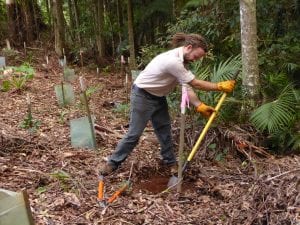 The question that is often asked: Why do we do it? There is a certain amount of satisfaction in seeing a degraded area being replaced with a natural environment where animals can breed and survive. Isn’t that what our pioneers wanted when they gifted areas of their land to be protected in its natural state?
The question that is often asked: Why do we do it? There is a certain amount of satisfaction in seeing a degraded area being replaced with a natural environment where animals can breed and survive. Isn’t that what our pioneers wanted when they gifted areas of their land to be protected in its natural state?

